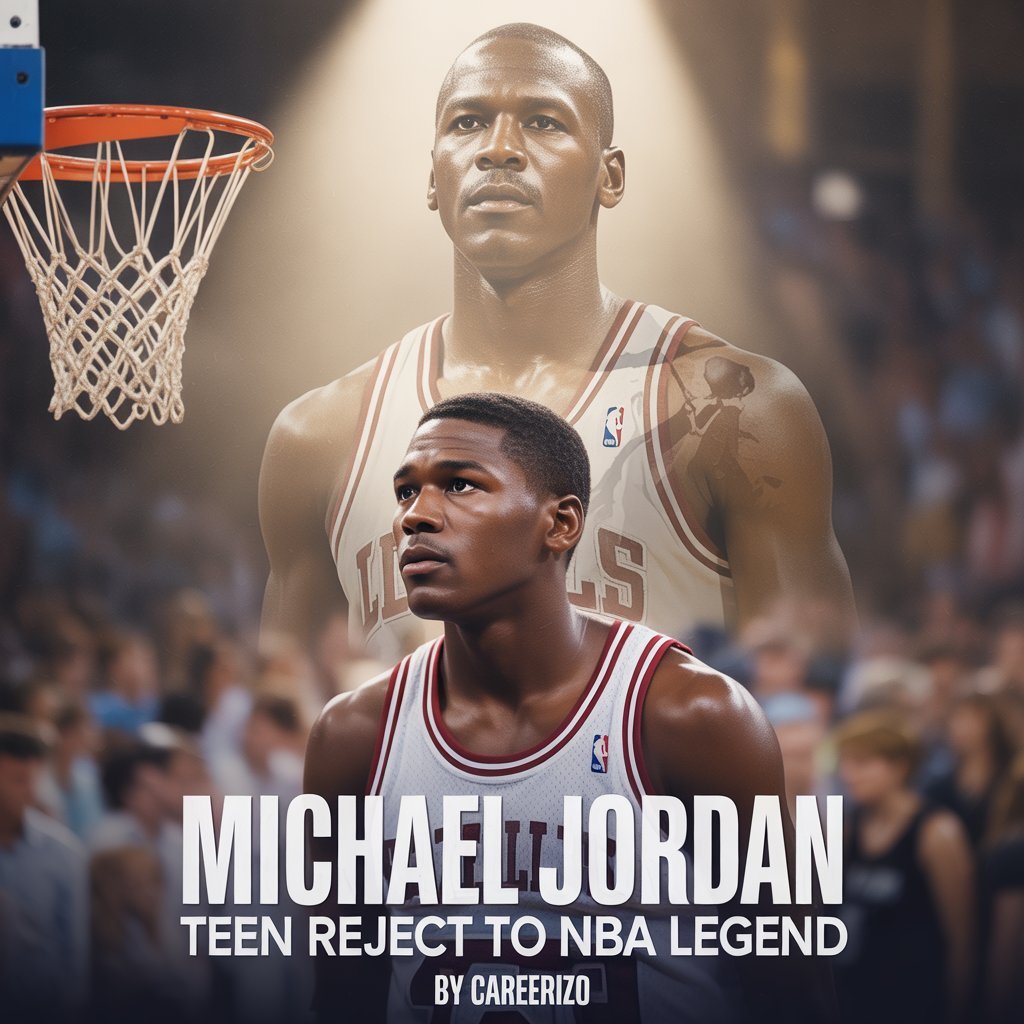Michael Jordan Teen Reject to NBA Legend By Careerizo
Did you know that one of the most successful basketball players of all time was once cut from his high school team? This shocking fact is just the beginning of Michael Jordan’s inspiring journey to becoming an NBA legend.
The story of his perseverance and determination is a testament to the power of hard work and dedication. Despite facing rejection, he went on to achieve incredible success, shaping his illustrious career into what it is today.
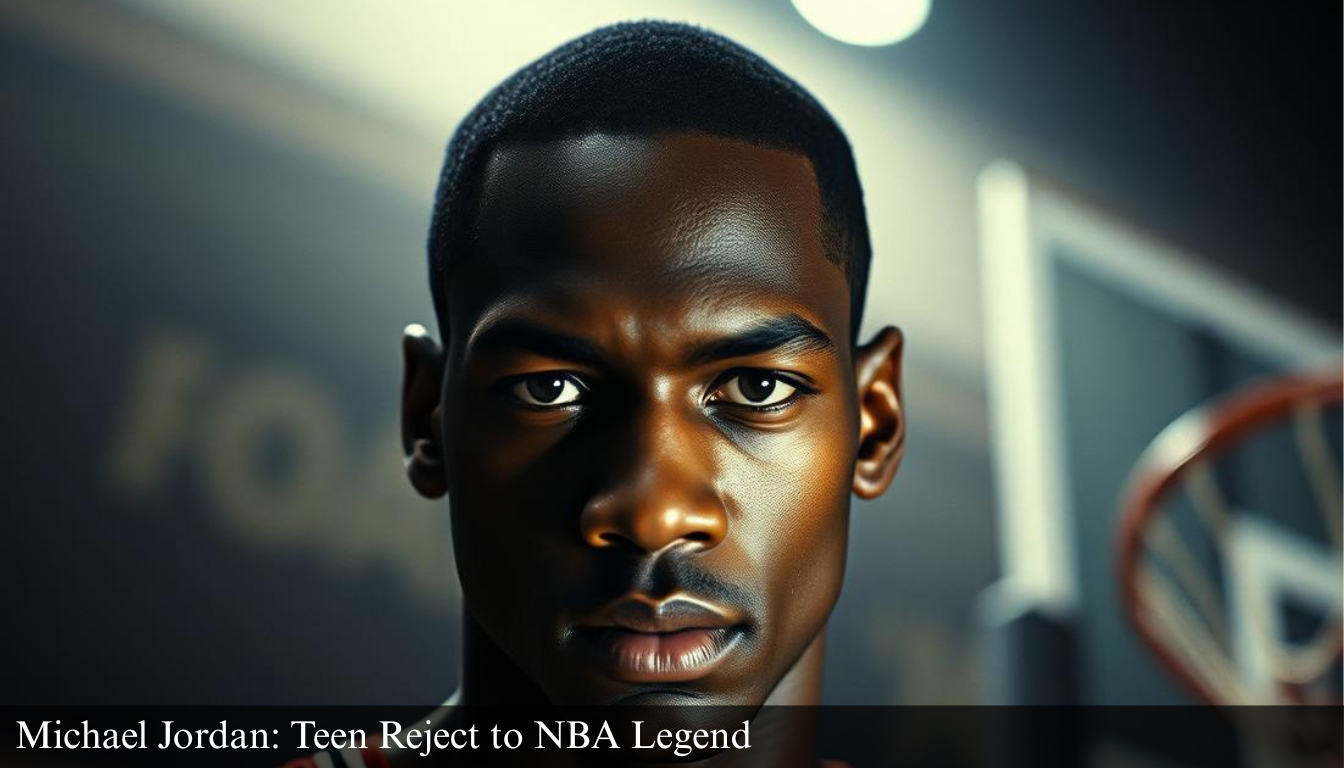
As we explore Michael Jordan’s biography, we’ll delve into the key factors that contributed to his rise to fame, from his early days to his championship wins.
Key Takeaways
- Michael Jordan was cut from his high school basketball team
- He persevered and went on to achieve great success.
- His determination and hard work shaped his illustrious career.
- We’ll explore the key factors that contributed to his rise to fame.
- His championship wins are a testament to his enduring legacy.
The Early Years: Michael Jordan’s Childhood and Basketball Beginnings
Before becoming an NBA icon, Michael Jordan was a young boy with a passion for basketball, influenced by his family and early interactions with the game. Growing up in Wilmington, North Carolina, Michael Jordan’s early life was marked by a strong family support system that encouraged his athletic pursuits.
Family Background and Influences
Michael Jordan was born to James & Deloris Jordan. He was child four of five. His kin were key in growing his love for sports. His dad, James Jordan, was a big help. He taught Michael & his kin the key parts of lots of sports. This list had baseball & hoops. Michael’s home was a good spot. It let him test out his sport power with no hold.
First Encounters with Basketball
Michael Jordan’s first try at ball was at Laney High School. He liked the sport a lot. He was cut from the main team in his tenth grade year. This was a big hit, yet it drove him more as time went on. Even with this first “no”, Jordan kept on working hard. He tried non, stop to get better at his game.

Early Signs of Athletic Potential
Even in his early years, Michael Jordan showed signs of becoming an exceptional athlete. He was competitive and driven, traits that were encouraged by his family and coaches. Some of the early indicators of his athletic potential included:
- His ability to quickly improve his basketball skills
- A strong competitive spirit that drove him to succeed
- Physical attributes such as height and agility that gave him an edge on the court
These factors combined to lay the foundation for his future success in basketball.
The Famous Rejection: Cut from Varsity Team
One of the most famous rejections in sports history occurred when Michael Jordan was cut from the varsity team at Laney High School. This pivotal moment took place during his sophomore year, marking a significant setback in his early basketball career.
The Sophomore Year Setback at Laney High School
At Laney High School, Michael Jordan was a young player with a lot of potential, but he faced a harsh reality when he was deemed not good enough for the varsity team. The decision was a blow to his confidence, but it also ignited a fire within him to prove his worth.
The varsity team’s coach at the time believed that Jordan was not ready for the varsity level, a decision that would later be seen as a catalyst for Jordan’s determination to succeed.
Emotional Impact and Response to Rejection
The rejection was a difficult pill for Jordan to swallow, but he chose not to let it define him. Instead, he used it as motivation to work harder and improve his skills.
"That failure made me realize that I wasn't as good as I thought I was." - Michael Jordan
Turning Disappointment into Motivation
Jordan’s response to the rejection was to dedicate himself to intense training. He spent hours practicing and honing his skills, determined to prove himself.
The Summer of Transformation
During the summer following his sophomore year, Jordan worked tirelessly to improve his game. This period was crucial in his development as a basketball player.
Working with Coach Pop Herring
Under the guidance of Coach Pop Herring, Jordan refined his techniques and built his strength. This mentorship played a significant role in Jordan’s transformation into a formidable basketball player.
| Year | Event | Outcome |
| Sophomore Year | Cut from Varsity Team | Motivation to Improve |
| Summer | Intensive Training | Significant Improvement |
| Junior Year | Made Varsity Team | Success and Recognition |
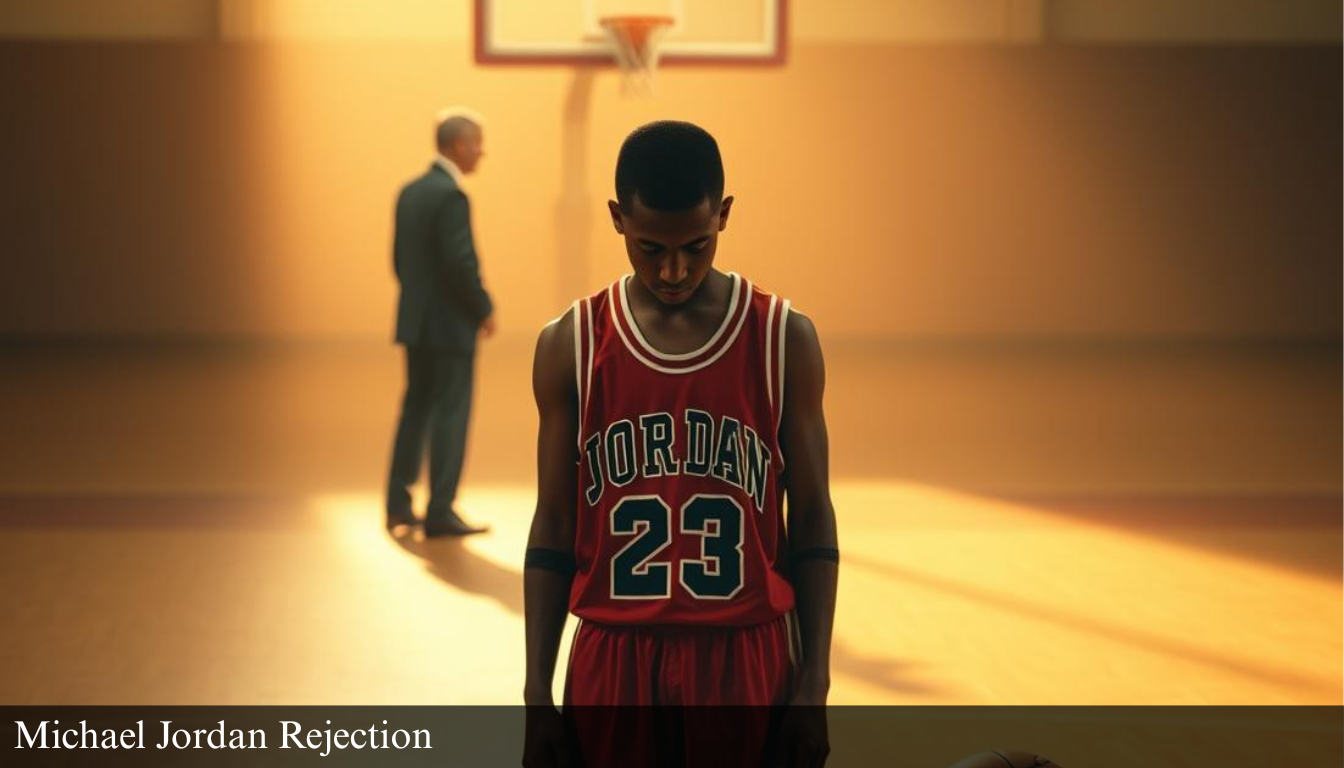
Rise to Prominence: High School Breakthrough and College Recruitment
Following his rejection from the varsity team, Michael Jordan worked tirelessly to improve, eventually becoming one of the top high school players. His hard work paid off during his junior and senior years at Laney High School.
Junior and Senior Year Dominance on the Court
In his third year, Michael Jordan shone on the court. He made 20 points each game. He showed his great skill in both score & guard play. His last year was just as good. Jordan led his team to win a lot.
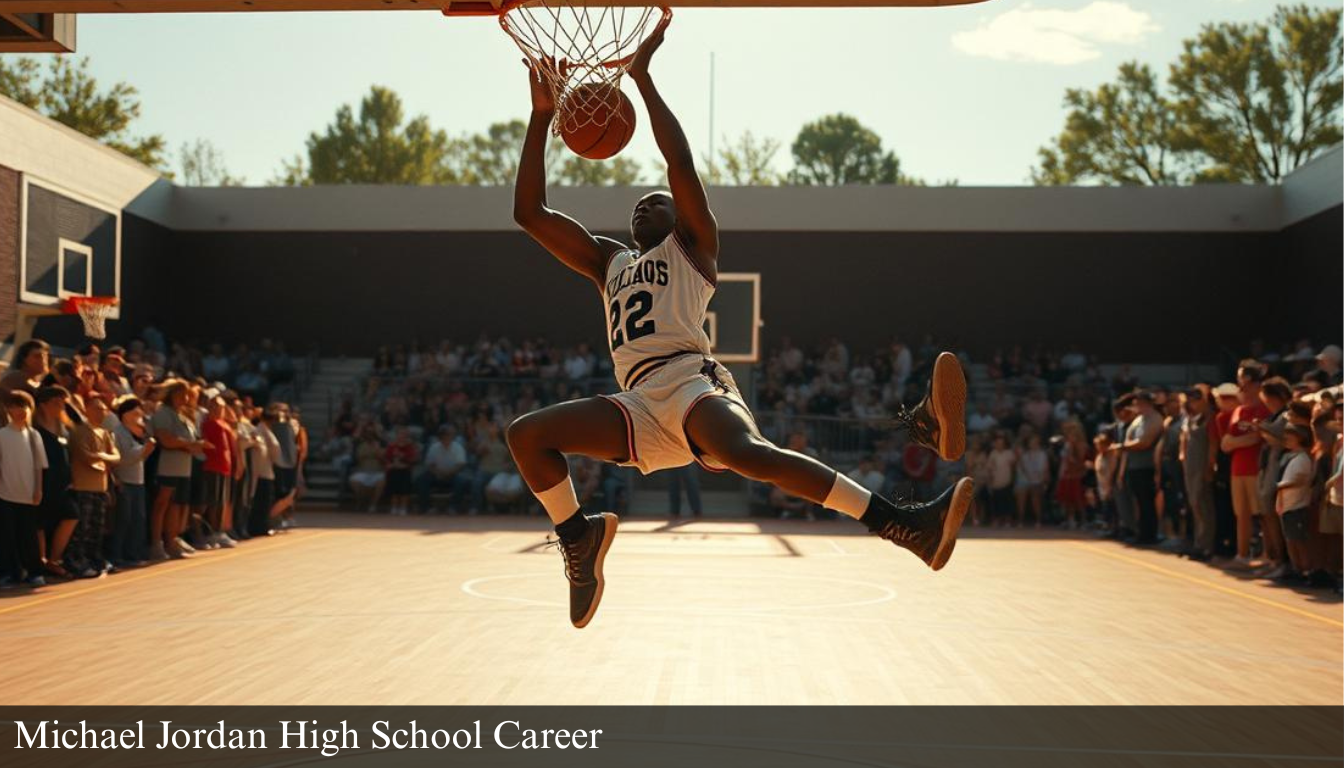
The McDonald’s All American Selection
Michael Jordan’s outstanding performance earned him a selection as a McDonald’s All-American in 1981. This honor recognized him as one of the top high school basketball players in the country.
The College Recruitment Process
The college recruitment process for Michael Jordan was highly competitive, with several top colleges vying for his talent. Ultimately, he chose to attend the University of North Carolina, where he would play under the renowned Coach Dean Smith.
| College | Offer |
| University of North Carolina | Full Scholarship |
| University of South Carolina | Partial Scholarship |
| North Carolina State University | Full Scholarship |
North Carolina Years: Building the Foundation of a Legend
Michael Jordan’s college years at the University of North Carolina laid the groundwork for his future success. During his time with the Tar Heels, Jordan developed crucial skills and gained invaluable experience that would shape his basketball career.
The Game-Winning Shot in the 1982 NCAA Championship
One of the top times in Jordan’s school days was in the 1982 NCAA game. With the score tied & the clock low, Jordan hit a jump shot. It won the game for North Carolina. This act not just showed his cool skill but also sent him to big fame.

Development Under Coach Dean Smith
Under Coach Dean Smith, Jordan got way better. He learned more about the game. Coach Smith helped a lot. He taught Jordan to value the team, be strict, & work hard. Smith’s help did more than just help with the game. He gave Jordan key values. These values helped Jordan win, on & off the court.
Olympic Experience with Team USA (1984)
In 1984, Jordan made it to Team USA for the LA Olympics. This time was great for him. He got to play against the top world play guys. He got to sharpen his skills on a big field. The tests & parts he saw in the Olympics were key. They got him set for his days in the NBA.
Some key takeaways from Jordan’s North Carolina years include:
- Developing clutch shooting skills, as seen in the 1982 NCAA Championship game.
- Gaining valuable experience under the guidance of Coach Dean Smith.
- Competing at the highest international level with Team USA in the 1984 Olympics.
These experiences collectively contributed to the foundation upon which Jordan's legendary NBA career was built.
Michael Jordan Teen Reject to NBA Legend By Careerizo: The Transformation Story
After being drafted by the Chicago Bulls in 1984, Michael Jordan’s transformation into a basketball icon began. This pivotal moment marked the beginning of his journey to becoming one of the most renowned figures in the NBA.
The 1984 NBA Draft and Chicago Bulls Selection
The 1984 NBA Draft was key for Michael Jordan. The Chicago Bulls took him as the 3rd pick. It was a big & key time, not just for the Bulls but for Jordan too. The team was set for a new start. Soon, the NBA saw how good Jordan was. The pick was the right one.
Chicago Bulls’ Strategic Move: By selecting Jordan, the Bulls not only gained a talented player but also a marketing sensation. Jordan’s charisma and athleticism made him an instant fan favorite, boosting the team’s profile nationwide.
Rookie Season Impact and Rookie of the Year Award
During his rookie season, Michael Jordan made an immediate impact, averaging 28.2 points per game and earning the NBA Rookie of the Year award in 1985. His impressive performance on the court helped the Bulls improve their standings and increased attendance at their games.
Jordan's Competitive Drive: His ability to dominate games and entertain crowds was a hallmark of his career,setting the stage for his future successes. The Rookie of the Year award was just the beginning of a decorated career filled with accolades and achievements.
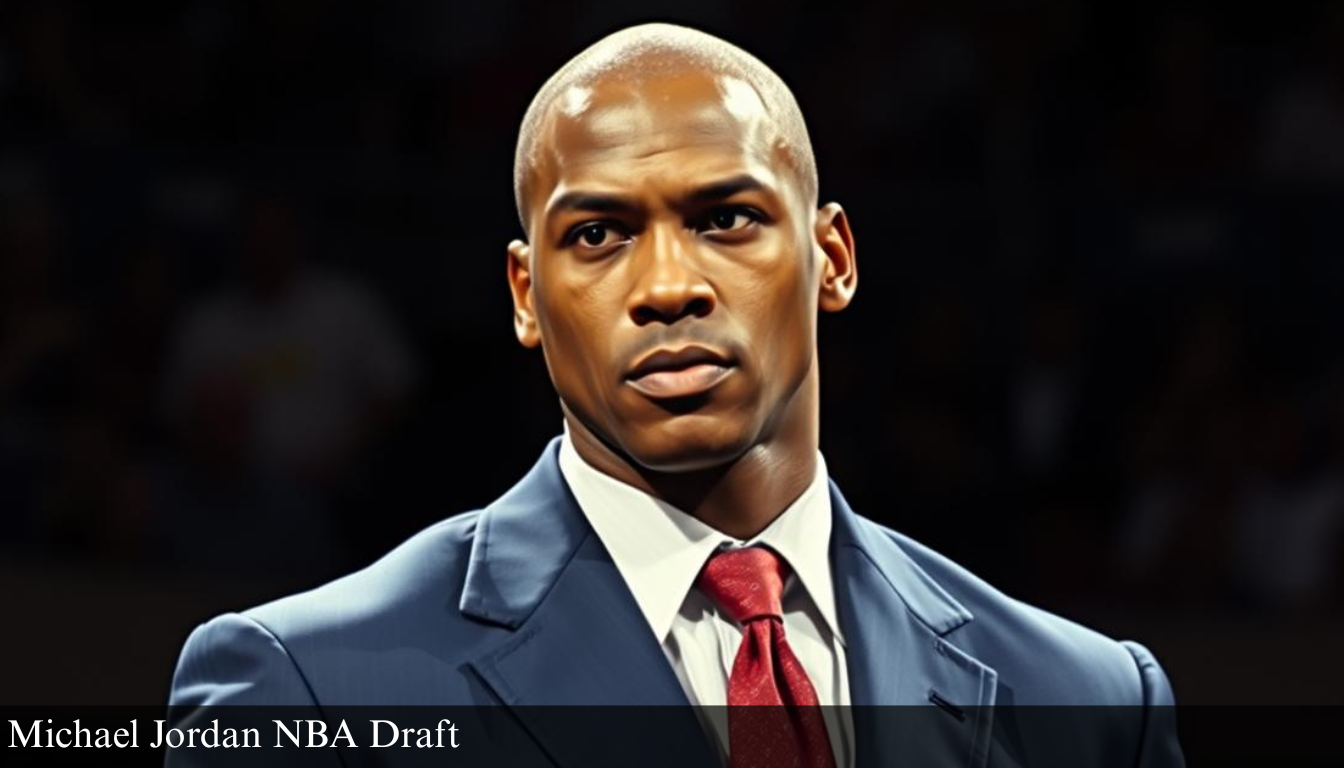
The Birth of Air Jordan and Nike Partnership
The partnership between Michael Jordan and Nike led to the creation of the Air Jordan brand, which became a cultural phenomenon. The first Air Jordan sneakers were released in 1985, and despite initial bans by the NBA due to non-compliance with uniform regulations, the shoes became incredibly popular.
Marketing Genius: The Air Jordan brand not only revolutionized the sneaker industry but also played a significant role in establishing Michael Jordan as a global brand. The partnership with Nike was instrumental in his success, both on and off the court.
The synergy between Jordan’s athletic prowess and Nike’s marketing capabilities created a legacy that extends beyond basketball, influencing fashion and popular culture.
The Championship Era: Bulls Dynasty and Global Superstardom
Michael Jordan’s career was highlighted by two distinct three peats with the Chicago Bulls. His journey to becoming an NBA champion was marked by perseverance, hard work, and a competitive drive that defined the Bulls’ dynasty of the 1990s.
First Three-Peat (1991-1993)
The Bulls’ first three-peat was a testament to Michael Jordan’s growing dominance in the league. Led by Jordan, the team secured consecutive NBA championships from 1991 to 1993.
Overcoming the Detroit Pistons “Bad Boys”
A crucial aspect of their success was overcoming the Detroit Pistons, known as the “Bad Boys.” Jordan’s performances against this tough opponent were pivotal in the Bulls’ championship runs.
Finals MVP Performances
Jordan’s Finals MVP awards during this period underscored his ability to perform under pressure. His clutch performances earned him widespread recognition.
First Retirement and Baseball Career
In 1993, Michael Jordan shocked the sports world by announcing his retirement from basketball to pursue a career in baseball. This decision was seen as a significant departure from his basketball legacy.
Return to Basketball and Second Three-Peat (1996-1998)
Jordan returned to the NBA in 1995, and the Bulls went on to achieve a second three-peat from 1996 to 1998. This period was marked by remarkable team success and individual accolades for Jordan.
The 72-10 Season
The 1995-1996 season was particularly notable, with the Bulls achieving a 72-10 record, one of the best in NBA history. Jordan’s leadership was instrumental in this achievement.
The Iconic “Flu Game”
One of the most memorable moments of Jordan’s career was the “Flu Game” during the 1997 NBA Finals, where he delivered a crucial performance despite being severely ill.
Beyond the Court: Business Ventures and Brand Building
Beyond his illustrious basketball career, Michael Jordan has built a business empire that continues to thrive. His journey into the business world has been marked by strategic decisions and innovative branding.
The Jordan Brand Empire and Billion-Dollar Fortune
The Jordan Brand, first a part of Nike, is now a huge cash realm. This rise shows the draw of Michael Jordan & the brand’s draw. The mark is famed for its key “Jumpman” logo. It’s now a name tied to top sport gear.
- Key factors in the Jordan Brand’s success include innovative marketing strategies.
- Strategic partnerships with athletes and celebrities.
- A strong presence in the global athletic apparel market.
NBA Team Ownership and Management Roles
In more moves, Michael Jordan now owns an NBA team. He got most of the Charlotte Hornets in 2010. His role in team lead has made the group more pro & smart in plan.
Philanthropy and Community Impact
Michael Jordan is known for his big heart too. He gives a lot through the Michael Jordan Foundation. His kind work aims to help key needs like school & health care. Jordan’s giving has touched many lives. It shows his deep wish to give back.
The Psychological Edge: Mental Toughness and Competitive Drive
Michael Jordan’s success wasn’t just about his physical abilities; it was also deeply rooted in his mental toughness and competitive drive. His ability to perform under pressure and push himself to be the best was unparalleled in the NBA.
Famous Rivalries and Motivational Tactics
One of the key factors in Michael Jordan’s mental toughness was his famous rivalries, particularly with players like Isiah Thomas and Magic Johnson. These rivalries fueled his competitive drive, pushing him to work harder and innovate on the court.
Leadership Philosophy and Team Impact
Michael Jordan led by what he did. He asked for much from him & his team. This made a top vibe in the Chicago Bulls. His lead role gave the team a big push. It made them play well & want to win more.
The “Killer Instinct” and Winning Mentality
Michael Jordan was renowned for his “killer instinct,” a term that refers to his ability to dominate games and make crucial plays when it mattered most. This winning mentality was contagious, spreading to his teammates and contributing to the Bulls’ success during their championship runs.
conclusion:
Michael Jordan’s legacy goes far beyond basketball. His story is about resilience, ambition, and the belief that setbacks don’t define your future. From being a teen once overlooked to becoming a global icon, Jordan proved that greatness is built through persistence and hard work.
His influence continues to shape the NBA, inspire athletes worldwide, and fuel entrepreneurs through the success of the Jordan Brand. Jordan’s name has become a symbol of excellence, reminding us that true legends create impact both on and off the court.
For more on his remarkable journey, you can read about him on Wikipedia. And if you’re looking for career inspiration and practical tools to push past your own limits, Careerizo is here to guide you.
FAQ
What was Michael Jordan’s experience like when he was cut from his high school varsity team?
Michael Jordan was cut from the varsity team during his sophomore year at Emsley A. Laney High School. He used this rejection as motivation to work harder and eventually became one of the most dominant players in basketball.
How did Michael Jordan’s family influence his early interest in basketball?
Michael Jordan’s family, particularly his father James Jordan, played a significant role in encouraging his early interest in sports. His father was a mechanic and a basketball enthusiast who supported Michael’s athletic pursuits.
What was the significance of Michael Jordan’s game-winning shot in the 1982 NCAA Championship?
Michael Jordan’s game-winning shot in the 1982 NCAA Championship was a pivotal moment in his career, showcasing his clutch abilities and helping the University of North Carolina win the championship.
How did Michael Jordan’s partnership with Nike lead to the creation of the Air Jordan brand?
Michael Jordan’s partnership with Nike led to the creation of the Air Jordan brand, which became a huge success and helped establish Michael Jordan as a global sports icon.
What were some of the key factors that contributed to Michael Jordan’s success in the NBA?
Michael Jordan’s success in the NBA can be attributed to his intense work ethic, competitive drive, and ability to perform under pressure. He was also known for his leadership and ability to dominate games on the court.
How did Michael Jordan’s brief retirement to pursue a baseball career affect his basketball career?
Michael Jordan’s brief retirement to pursue a baseball career allowed him to recharge and come back to basketball with renewed focus and motivation, ultimately leading to his second three-peat with the Chicago Bulls.
What is the Jordan Brand, and how did it become a billion-dollar empire?
The Jordan Brand is a subsidiary of Nike that was created around Michael Jordan’s image and endorsement. It has become a billion-dollar empire through the sale of Air Jordan sneakers, apparel, and other merchandise
What philanthropic efforts has Michael Jordan been involved in?
Michael Jordan has been involved in various philanthropic efforts, including the Michael Jordan Foundation, which supports various charitable causes, including education and healthcare initiatives.
How did Michael Jordan’s rivalries with other players motivate him?
Michael Jordan’s rivalries with players like the Detroit Pistons’ “Bad Boys” and other NBA teams motivated him to work harder and push himself to be the best.
What is Michael Jordan’s lasting legacy in the world of basketball?
Michael Jordan’s lasting legacy in the world of basketball is that of a dominant player who inspired a generation of athletes and helped popularize the sport globally.

